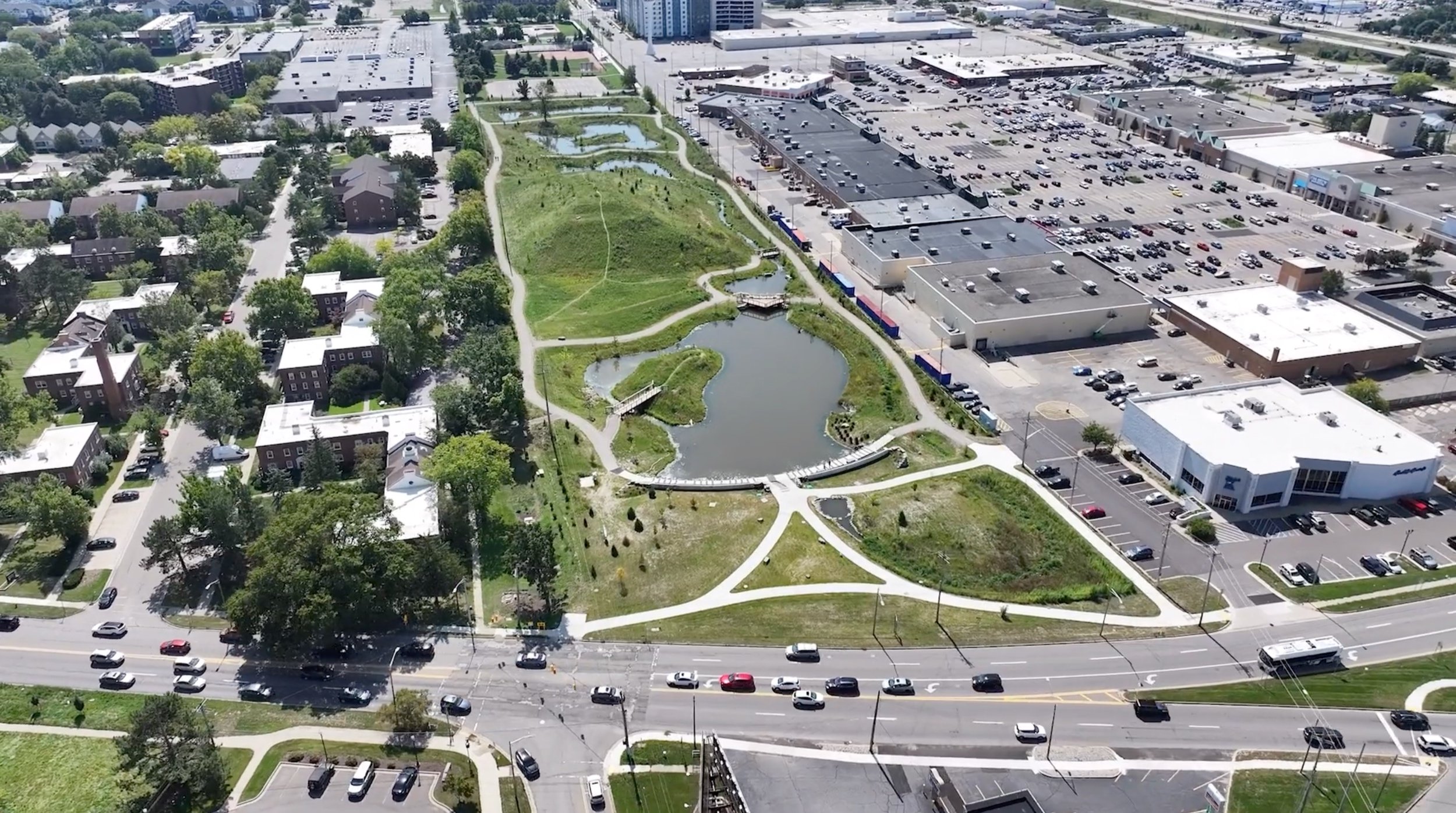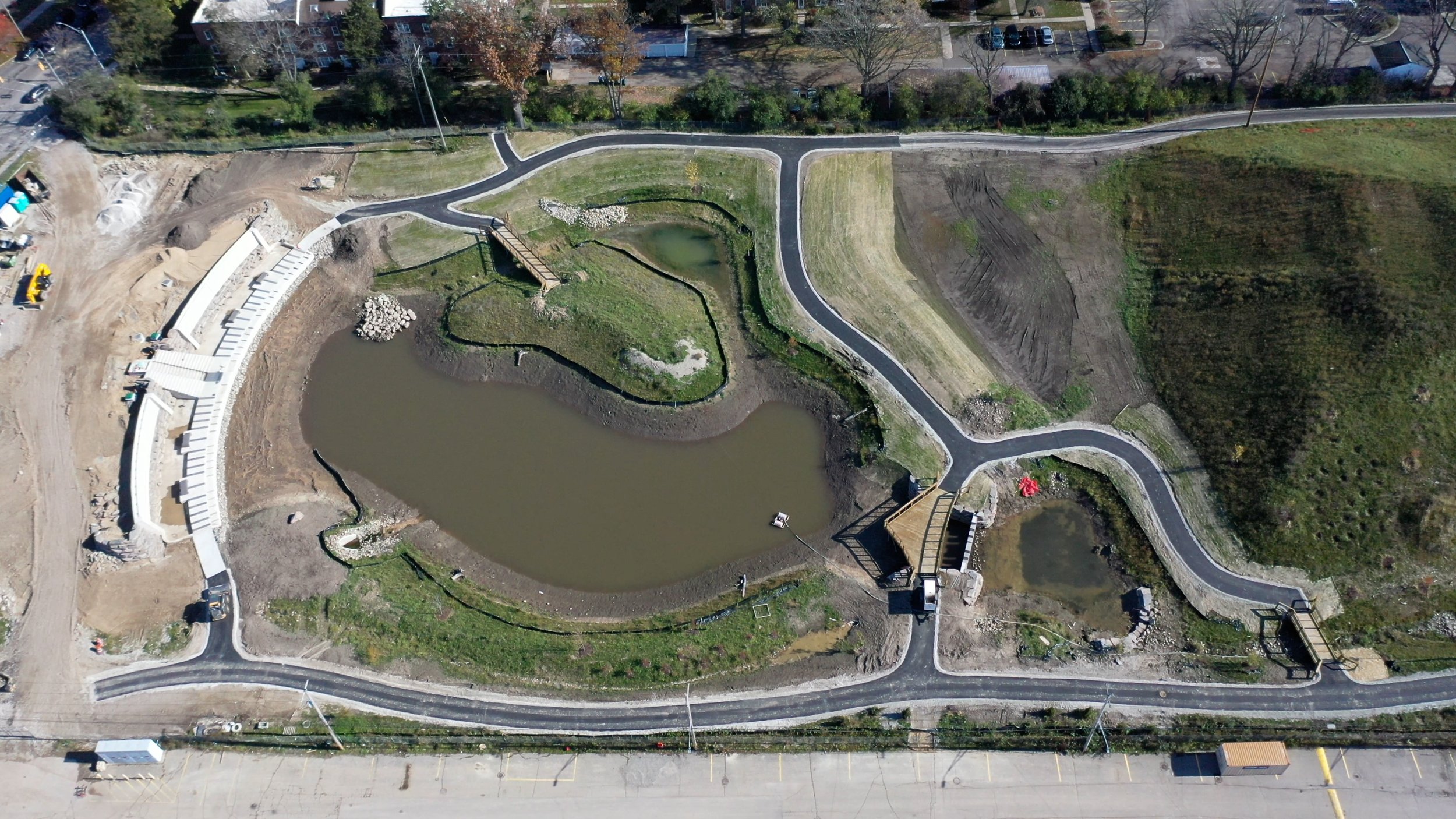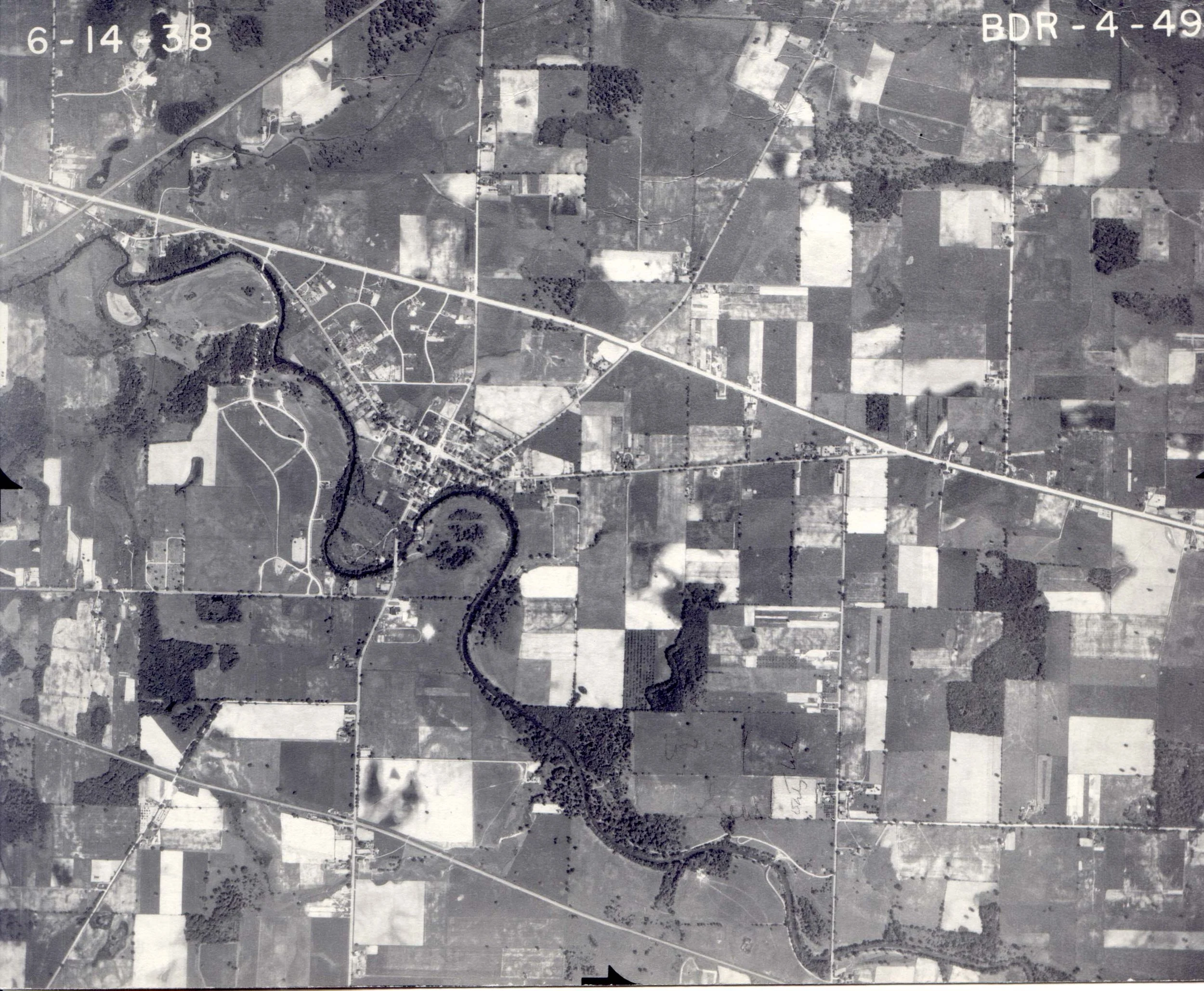
Montgomery Drain
A redesigned 100-year-old urban storm drain eliminates 96% of the 50,000-75,000 pounds of pollution per year that was polluting Lake Michigan
In the mid-1990s, an inspection of the Montgomery Drain revealed cracked and collapsed pipes, debris buildup, illicit connections and parts of the system that had reached the end of their useful lives. The Montgomery Drain was also lacking the capacity to adequately store and convey stormwater through the system; 52% of the pipes were too small to convey a 10-year storm event.
Land use changes and increases in both the volume and intensity of precipitation events caused the Montgomery Drain to no longer have enough capacity to operate efficiently, evidenced by localized flooding, surcharged pipes and increased stormwater velocities.
Within the existing drainage district, 80% of the current land cover is impervious—covered with pavement, concrete, rooftops, etc.—which leads to the direct runoff of stormwater into the Montgomery Drain. This direct runoff causes an increase in nonpoint source pollution and introduced metals, salts, hydrocarbons, solids, bacteria and other contaminants into the stormwater, which was ultimately discharging into the Red Cedar River through the Montgomery Drain.
Studies performed by Triterra and Spicer Group, Inc. independently showed that contamination exceeded mandated state and federal water quality criteria. The high level of contamination was a major contributor to the impairment of the Red Cedar River. Based on two years of sampling data, it was estimated that 50,000-75,000 pounds of contamination were conveyed through the Montgomery Drain into the Red Cedar River annually.
Red Cedar River in the 1960s on the campus of Michigan State University and in 2001 after The Clean Water Act was put into place
Urbandale Drain underwater in the 1970s because Montgomery Drain was overwhelmed
Kalamazoo Street bridge, 1975
Downloads
Story Map
The history of Montgomery Drainage District
Use of the land changed drastically through the decades; the Montgomery drainage district was mainly farmland in the 1930s and industrialized and impervious by the early 1990s.
Rebuilding Montgomery Drain















Infrastructure meets beauty
Press
July 2021 | WILX
Almost 75,000 pounds of pollution in the Red Cedar River is ‘unhealthy’ to residents
July 2021 | Lansing State Journal
Montgomery Drain project near Frandor could start pumping water by summer's end
May 2021 | WILX
Drain project closing roads near Frandor
January 2021 | City Pulse
Extra dirt from drain project beefs up Ranney Park sledding hill
January 2021 | East Lansing Info
Ask ELi: What’s Happening Near Frandor?
October 2020 | City Pulse
Unhappy Frandor neighbors meet with city officials tonight over Montgomery Drain assessment
September 2020 | City Pulse
Lansing City Council to set public hearing tonight on Montgomery Drain project
May 2020 | City Pulse
Lindemann: Greater Lansing stuck with ‘unstoppable’ drainage project
May 2020 | City Pulse
Lansing taxpayers could cover most of $35 million drain project amid pandemic
February 2018 | City Pulse
Red Cedar project surfaces after years of delays
October 2016 | Lansing State Journal
Fountains, waterfalls, art to decorate $30M drain project
January 2016 | Lansing State Journal
Red Cedar drain could cost up to $30M
October 2014 | Lansing State Journal
Judge tosses lawsuits over Red Cedar drain project







